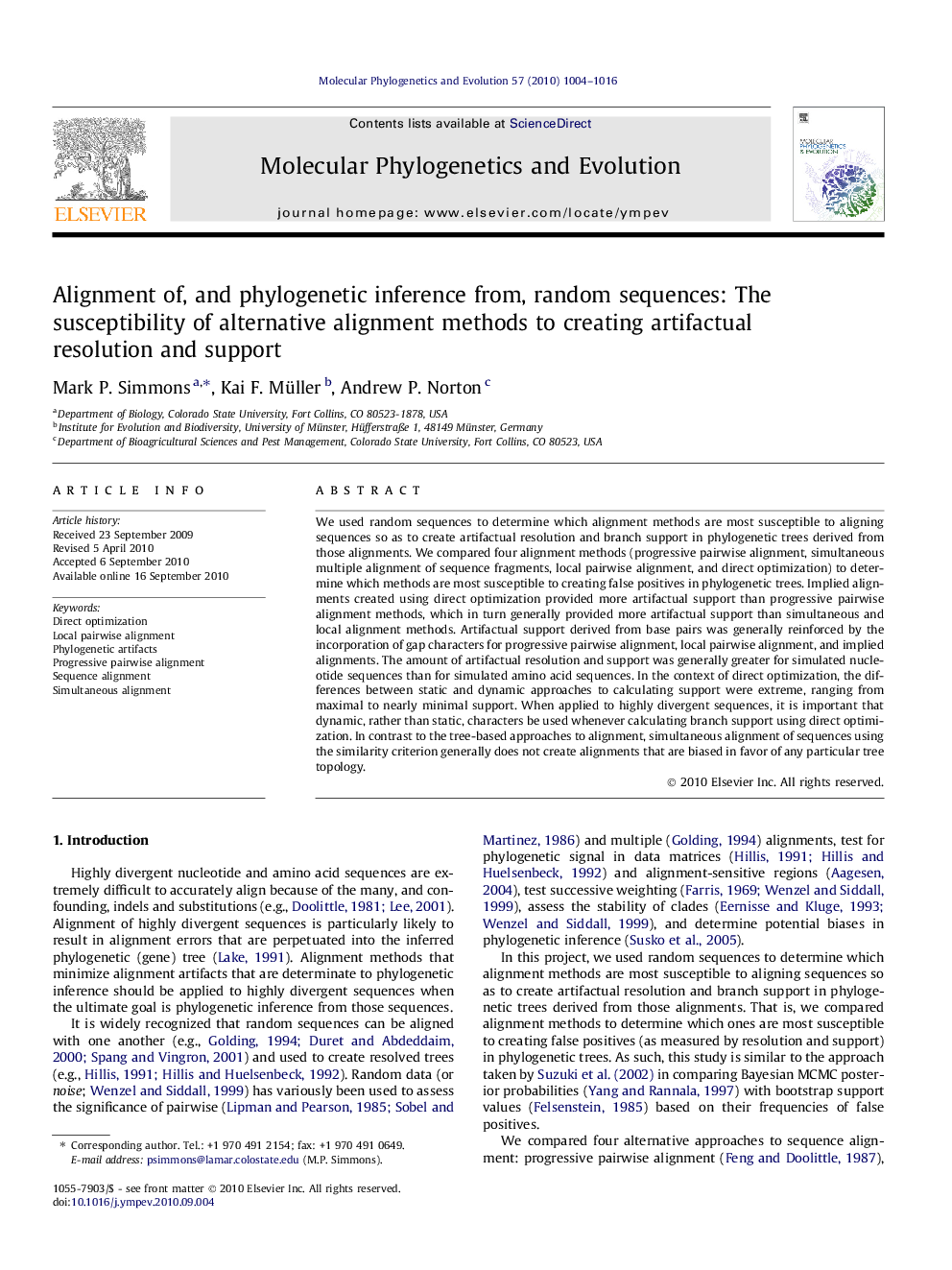| Article ID | Journal | Published Year | Pages | File Type |
|---|---|---|---|---|
| 2834249 | Molecular Phylogenetics and Evolution | 2010 | 13 Pages |
We used random sequences to determine which alignment methods are most susceptible to aligning sequences so as to create artifactual resolution and branch support in phylogenetic trees derived from those alignments. We compared four alignment methods (progressive pairwise alignment, simultaneous multiple alignment of sequence fragments, local pairwise alignment, and direct optimization) to determine which methods are most susceptible to creating false positives in phylogenetic trees. Implied alignments created using direct optimization provided more artifactual support than progressive pairwise alignment methods, which in turn generally provided more artifactual support than simultaneous and local alignment methods. Artifactual support derived from base pairs was generally reinforced by the incorporation of gap characters for progressive pairwise alignment, local pairwise alignment, and implied alignments. The amount of artifactual resolution and support was generally greater for simulated nucleotide sequences than for simulated amino acid sequences. In the context of direct optimization, the differences between static and dynamic approaches to calculating support were extreme, ranging from maximal to nearly minimal support. When applied to highly divergent sequences, it is important that dynamic, rather than static, characters be used whenever calculating branch support using direct optimization. In contrast to the tree-based approaches to alignment, simultaneous alignment of sequences using the similarity criterion generally does not create alignments that are biased in favor of any particular tree topology.
Graphical abstractFigure optionsDownload full-size imageDownload as PowerPoint slideResearch highlights► Artifactual support: implied alignments > progressive pairwise alignments. ► Artifactual support: progressive pairwise alignments ⩾ simultaneous, local alignments. ► Artifactual support reinforced by incorporation of gap characters. ► Artifactual resolution and support: nucleotide characters ⩾ amino acid characters.
